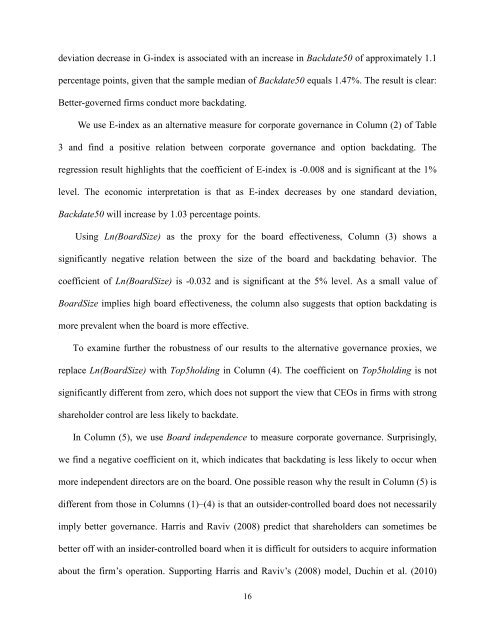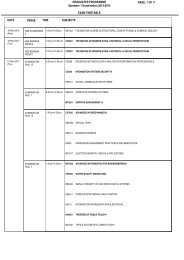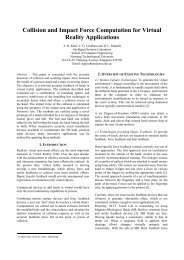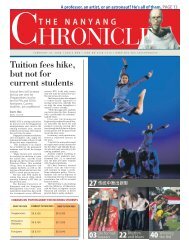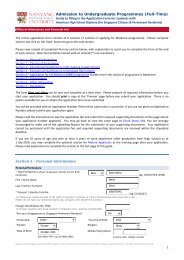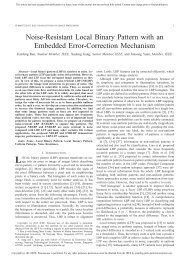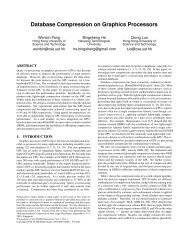Backdating Executive Option Grants - Nanyang Technological ...
Backdating Executive Option Grants - Nanyang Technological ...
Backdating Executive Option Grants - Nanyang Technological ...
Create successful ePaper yourself
Turn your PDF publications into a flip-book with our unique Google optimized e-Paper software.
deviation decrease in G-index is associated with an increase in Backdate50 of approximately 1.1percentage points, given that the sample median of Backdate50 equals 1.47%. The result is clear:Better-governed firms conduct more backdating.We use E-index as an alternative measure for corporate governance in Column (2) of Table3 and find a positive relation between corporate governance and option backdating. Theregression result highlights that the coefficient of E-index is -0.008 and is significant at the 1%level. The economic interpretation is that as E-index decreases by one standard deviation,Backdate50 will increase by 1.03 percentage points.Using Ln(BoardSize) as the proxy for the board effectiveness, Column (3) shows asignificantly negative relation between the size of the board and backdating behavior. Thecoefficient of Ln(BoardSize) is -0.032 and is significant at the 5% level. As a small value ofBoardSize implies high board effectiveness, the column also suggests that option backdating ismore prevalent when the board is more effective.To examine further the robustness of our results to the alternative governance proxies, wereplace Ln(BoardSize) with Top5holding in Column (4). The coefficient on Top5holding is notsignificantly different from zero, which does not support the view that CEOs in firms with strongshareholder control are less likely to backdate.In Column (5), we use Board independence to measure corporate governance. Surprisingly,we find a negative coefficient on it, which indicates that backdating is less likely to occur whenmore independent directors are on the board. One possible reason why the result in Column (5) isdifferent from those in Columns (1)–(4) is that an outsider-controlled board does not necessarilyimply better governance. Harris and Raviv (2008) predict that shareholders can sometimes bebetter off with an insider-controlled board when it is difficult for outsiders to acquire informationabout the firm’s operation. Supporting Harris and Raviv’s (2008) model, Duchin et al. (2010)16


